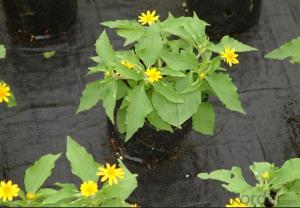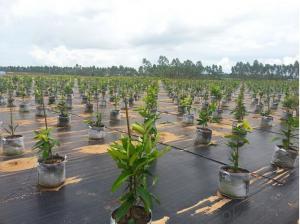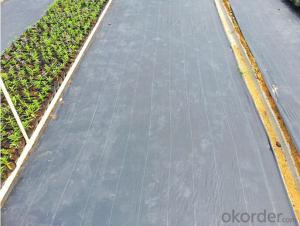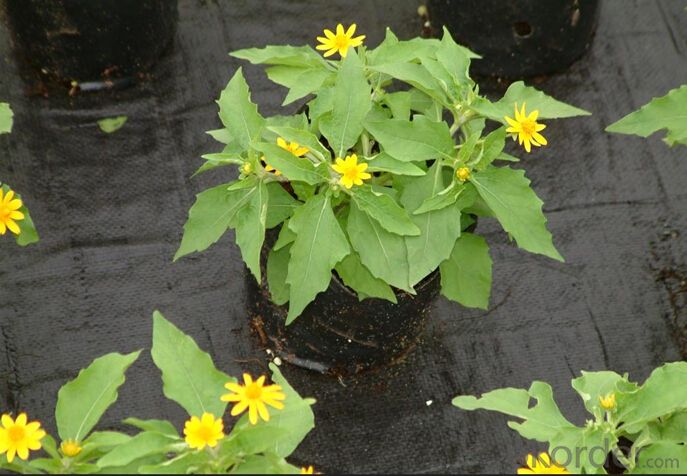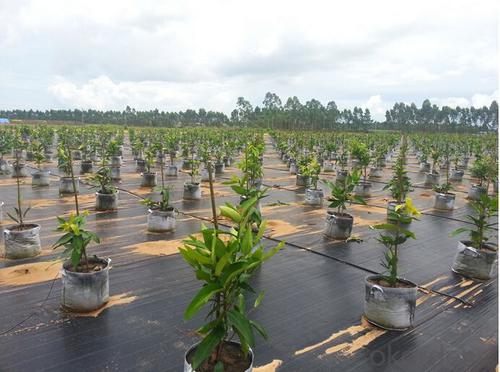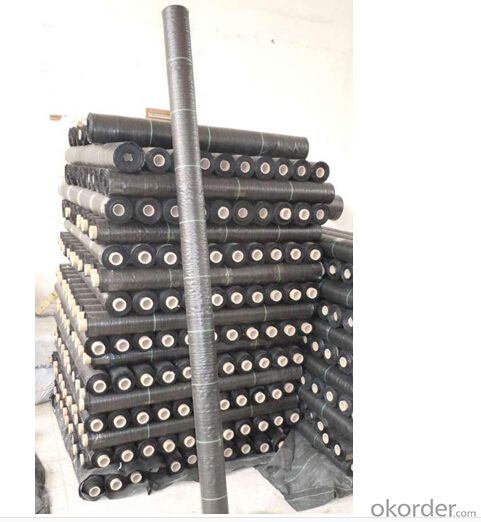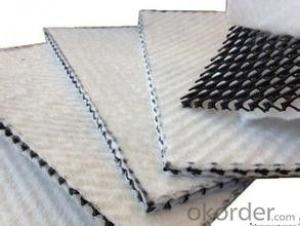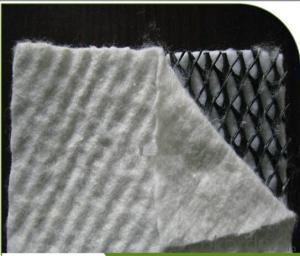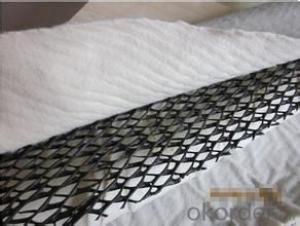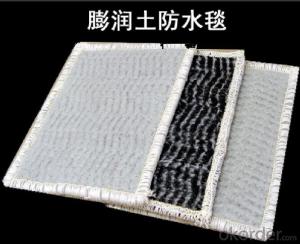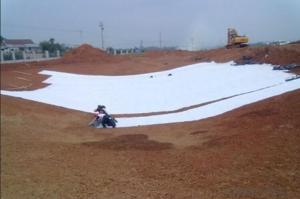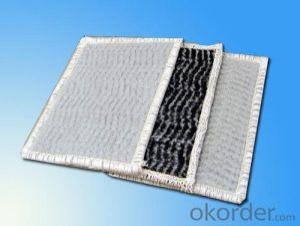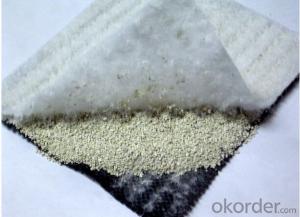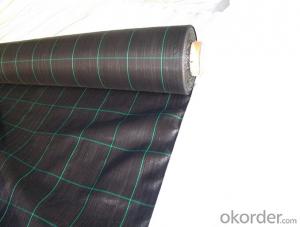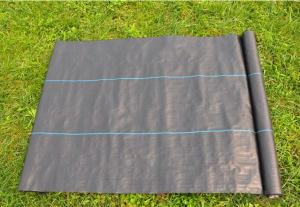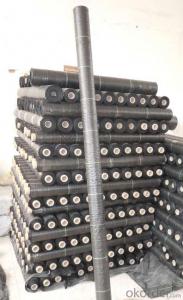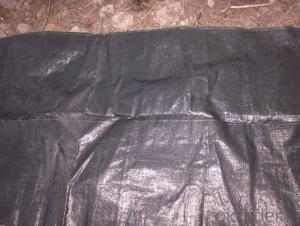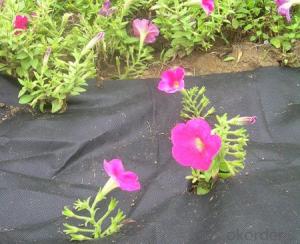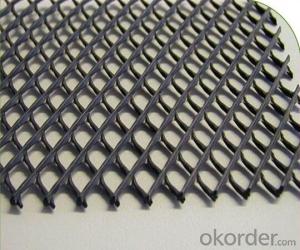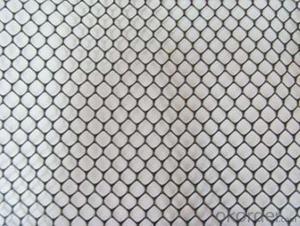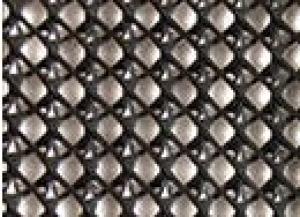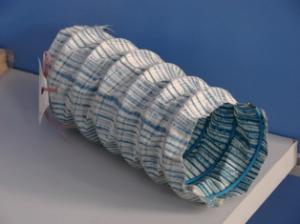100% Virgin Polypropylene Anti Weed Mat to control grass
- Loading Port:
- Qingdao
- Payment Terms:
- TT OR LC
- Min Order Qty:
- 10000 m²
- Supply Capability:
- 1000000 m²/month
OKorder Service Pledge
OKorder Financial Service
You Might Also Like
1. Introduction of PP Woven Geotextile
Woven geotextile mainly uses polypropylene(PP),polyethylene(PE) as raw materials. After extruding.It has long term corrosion resistance in the soil and water with different PH;Due to its excellent microbiological degradation resistance. The material is light and soft, so it is convenient to transport and install.
2. Introduction of PP Woven Geotextile
1.Weight | 60gsm-170gsm |
2.Width | 0.6m-5.3m |
3.Roll Length | 5m,10m,20m,25m,50m,100m,200m or as required |
4.Color | Black,Green,Black-green or as required |
5.Weave | 8*8,10*10,11*11,12*12,12*16 |
6.Material | 100% PP material |
7.U.V | With or without U.V |
8.Delivery time | Within 25-35 days after receive prepayment or L/C at sight |
9.Min order | 1 ton |
10.Packing | Each roll with paper core inside and polybag outside or as your request. |
11.Quantity | 10 tons/20'FT, 22tons/40'HC. |
12.Export market | Europe, Australia, U.S.A, Canada, Argentina, The Middle East, Japan and so on. |
3. Function of PP Woven Geotextile
1). Cover crops in the ground surface, prevent weeds and against the insect.
2). Controlling soil humidity and the temperature
3). Does not affect the growth of the crops
4). Protects plants from harmfully solar radiation
5). Air permeability, water permeability help crops growth.
6). Mothproof, eco-friendly, breathable, anti-bacteria, tear-resistant, fusible
4. Application of PP Woven Geotextile
1). Weed block for landscaped garden beds
2). Permeable liners for planters (stops soil erosion)
3). Weed control under wooden decking
4). Geotextile for separating aggregate / soils under walkway blocks or bricks
5). Assists in preventing paving from settling unevenly
6). Landscape fabric prevents soil erosion
5. Product photo of PP Woven Geotextile
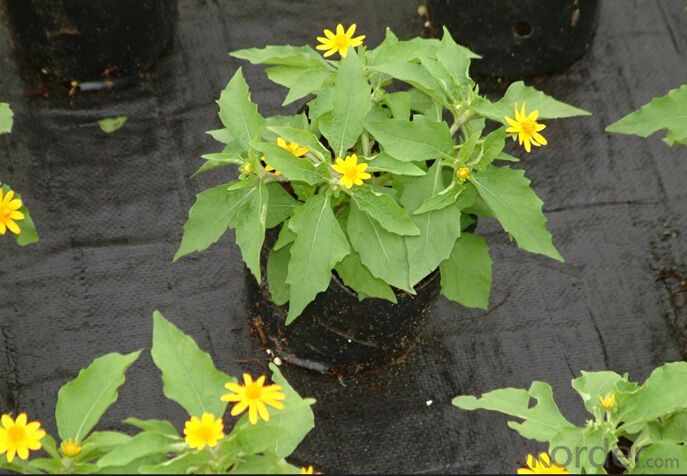
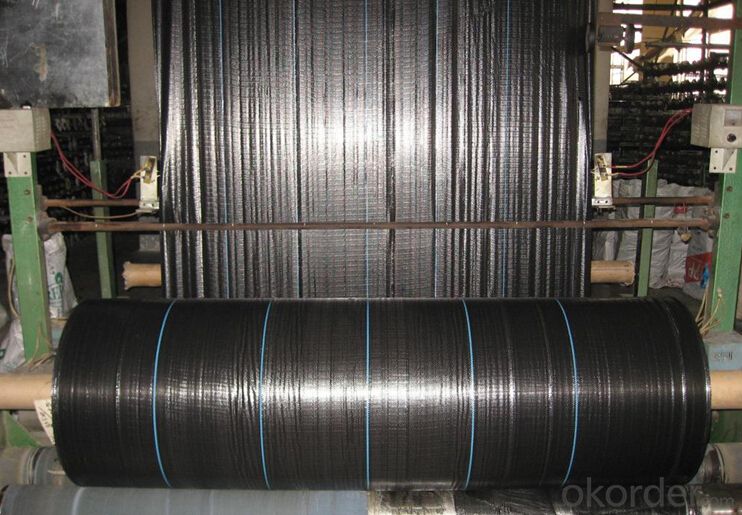
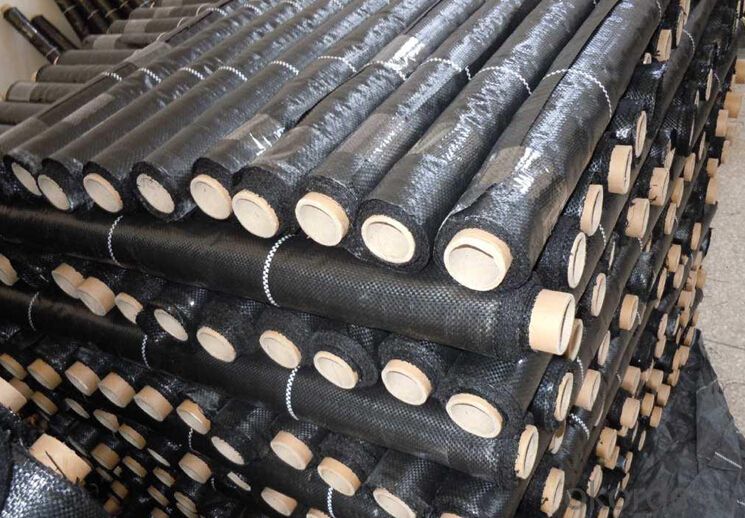
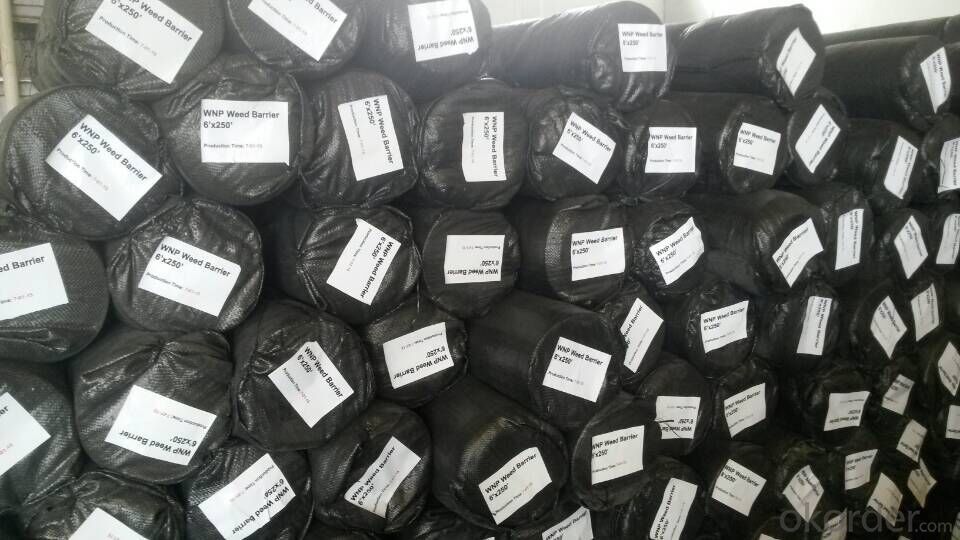
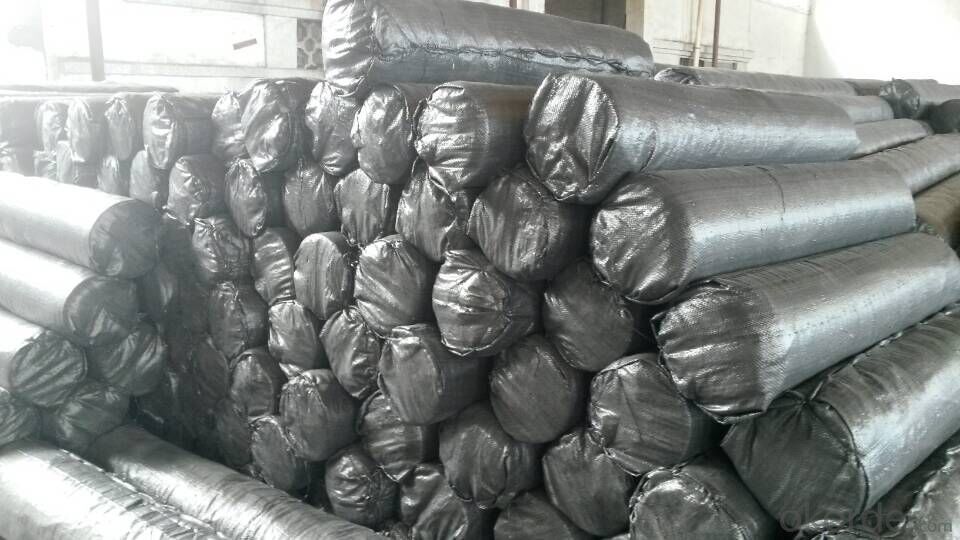
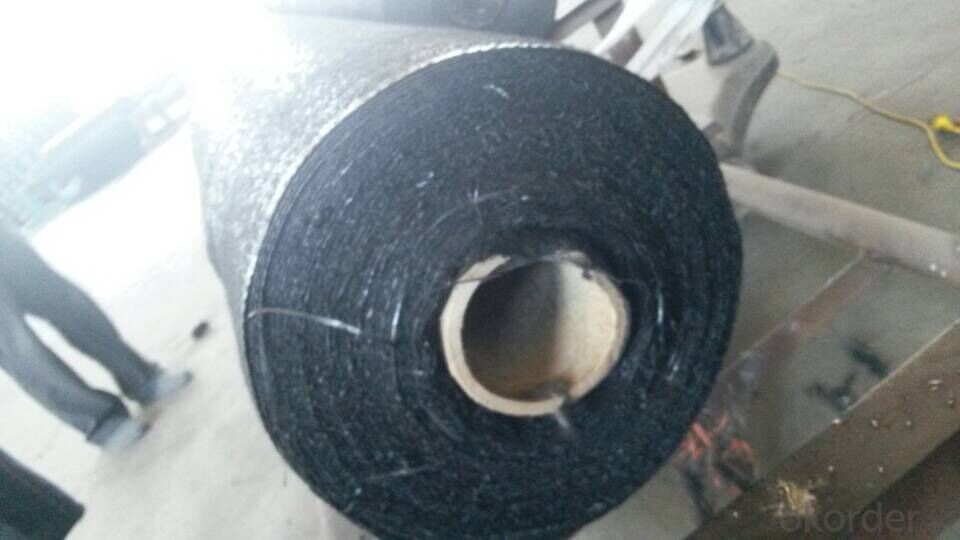
- Q: Can earthwork products be used for slope stabilization in earthquake-prone areas?
- Yes, earthwork products can be used for slope stabilization in earthquake-prone areas. These products, such as geosynthetics, can provide reinforcement and stability to slopes, reducing the risk of landslides or slope failures during seismic events. The materials used in earthwork products can enhance the strength and shear resistance of the soil, making them effective in withstanding the ground shaking and lateral forces caused by earthquakes. Additionally, these products can also help control erosion and provide long-term stability to slopes in earthquake-prone areas.
- Q: Are earthwork products suitable for use in riverbank stabilization projects?
- Yes, earthwork products, such as geotextiles, geogrids, and erosion control blankets, are often used in riverbank stabilization projects. These products provide effective erosion control and help prevent soil loss along riverbanks, thereby contributing to the stability and longevity of the riverbanks.
- Q: What are the benefits of using earthwork products in roadways?
- The benefits of using earthwork products in roadways include cost-effectiveness, improved stability and durability, enhanced drainage, reduced soil erosion, and environmental sustainability. These products, such as geomembranes, geotextiles, and geogrids, help to reinforce the soil, distribute loads more evenly, and prevent the mixing of different soil layers. This significantly reduces the need for expensive excavation, transportation, and disposal of excess soil. Additionally, earthwork products improve the road's resistance to settlement, frost heave, and cracking, resulting in a longer lifespan and reduced maintenance costs. They also aid in proper water drainage, preventing waterlogging and prolonging the road's integrity. By reducing soil erosion and providing effective erosion control, earthwork products help mitigate environmental impacts and maintain the surrounding ecosystem.
- Q: Civil Engineering Materials. e Material saturated with water, and then dry the surface, is the hole filled with water or closed hole filled with water? What is the condition of putting the material in a jar filled with water? Not to say that the closed hole is not water?
- Civil Engineering Materials. e Material saturated with water, and then dry the surface, is the hole filled with water or closed hole filled with water? What is the condition of putting the material in a jar filled with water? Not to say that the closed hole is not water?
- Q: Are earthwork products resistant to UV radiation?
- Yes, earthwork products are generally resistant to UV radiation. The materials used in earthwork products, such as geomembranes and geotextiles, are designed to withstand long-term exposure to sunlight without significant degradation or damage from UV radiation.
- Q: How are geosynthetic materials tested for quality and performance?
- Geosynthetic materials are tested for quality and performance through a combination of physical, mechanical, and chemical tests. These tests may include tensile strength, tear resistance, puncture resistance, seam strength, UV stability, chemical resistance, and durability testing. Additionally, geosynthetic materials are often subjected to simulated environmental conditions such as extreme temperatures, moisture, and aging to assess their long-term performance. These rigorous testing processes ensure that geosynthetic materials meet the required standards and can perform effectively in various geotechnical applications.
- Q: Civil engineering commonly used materials which four kinds
- Mainly steel, cement, stones, sand
- Q: What are the advantages of using geotextile fabrics in landscaping projects?
- Geotextile fabrics offer several advantages in landscaping projects. Firstly, they act as a barrier that prevents weed growth, reducing the need for herbicides and manual weeding. Secondly, these fabrics can effectively control soil erosion by stabilizing the soil and preventing it from washing away during heavy rainfall or irrigation. Additionally, geotextile fabrics can provide reinforcement to weak soil, improving its stability and load-bearing capacity. They also facilitate water drainage, preventing waterlogging and promoting healthy plant growth. Finally, these fabrics are permeable, allowing air and nutrients to reach plant roots while retaining moisture in the soil. Overall, the use of geotextile fabrics in landscaping can enhance the longevity and sustainability of outdoor projects.
- Q: What is the purpose of using geosynthetic reinforcements in tunnel construction?
- The purpose of using geosynthetic reinforcements in tunnel construction is to enhance the stability and strength of the tunnel structure. These materials, such as geotextiles, geogrids, and geomembranes, provide additional support and prevent soil erosion. They help distribute loads evenly, increase the overall durability of the tunnel, and minimize the risk of structural failure. Additionally, geosynthetics can improve drainage and reduce the potential for water seepage, ensuring a safer and more reliable tunnel system.
- Q: What are the different types of geosynthetic reinforcements for soil slopes?
- There are several types of geosynthetic reinforcements commonly used for soil slopes, including geotextiles, geogrids, geocells, and geocomposites. Geotextiles are permeable fabrics that provide soil separation, filtration, and drainage. Geogrids are high-strength synthetic materials used for soil reinforcement by providing tensile strength to the soil mass. Geocells are three-dimensional honeycomb-like structures that confine and stabilize soil, preventing erosion. Geocomposites are combinations of different geosynthetic materials, offering a range of functions such as filtration, reinforcement, and drainage. Each type of geosynthetic reinforcement has specific characteristics and benefits, allowing engineers to choose the most suitable option for a particular soil slope application.
Send your message to us
100% Virgin Polypropylene Anti Weed Mat to control grass
- Loading Port:
- Qingdao
- Payment Terms:
- TT OR LC
- Min Order Qty:
- 10000 m²
- Supply Capability:
- 1000000 m²/month
OKorder Service Pledge
OKorder Financial Service
Similar products
Hot products
Hot Searches
Related keywords
